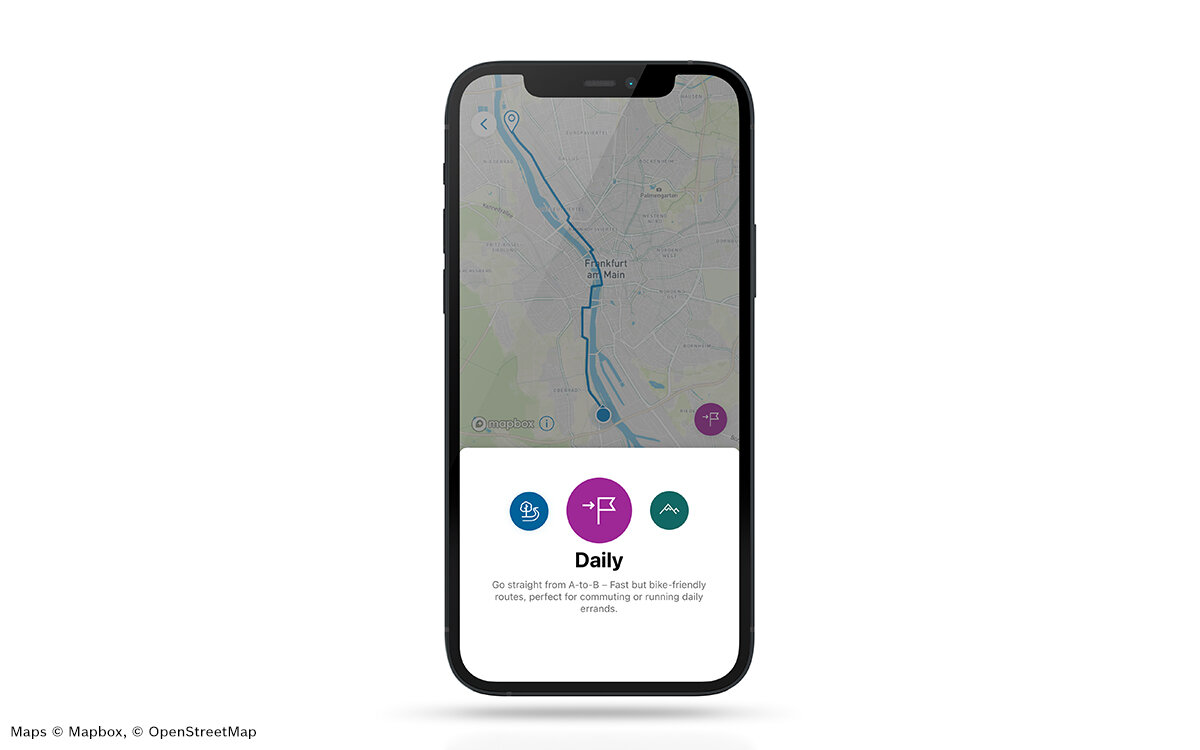Understanding eBike Route Planning and AI Integration
Artificial Intelligence (AI) has made significant strides in various fields, and eBike route planning is no exception. AI-powered route planning offers numerous advantages, including increased efficiency, enhanced safety, and personalized experiences for eBike riders. By analyzing vast amounts of data and incorporating machine learning techniques, AI algorithms can generate optimized routes tailored to individual preferences and requirements.
Traditional eBike route planning methods often rely on static maps and basic criteria, such as distance and terrain. However, AI-driven solutions take into account a wide range of factors, such as real-time traffic conditions, weather patterns, and user-specific preferences, to create more accurate and dynamic routes. As a result, eBike riders can enjoy safer, more enjoyable, and more efficient rides, regardless of their skill level or destination.
Moreover, AI-powered eBike route planning tools can continuously learn and adapt to individual user behavior, further refining the route optimization process over time. By analyzing data on past rides, user feedback, and environmental conditions, these AI algorithms can provide increasingly personalized and relevant route recommendations, setting the stage for a more intelligent and interconnected eBike experience.
Top AI-Driven eBike Route Planning Solutions
Artificial Intelligence (AI) has revolutionized eBike route planning, offering numerous benefits to riders worldwide. A variety of AI-based eBike route planning tools and services are available, each with unique features, benefits, and selling points. Here are some of the top AI-driven eBike route planning solutions:
1. Komoot
Komoot is a popular AI-powered route planning platform that caters to various outdoor activities, including eBiking. It offers turn-by-turn voice navigation, offline maps, and real-time weather updates. Komoot’s AI algorithms analyze various factors, such as terrain, traffic, and user preferences, to generate optimized routes tailored to individual needs.
2. Ride with GPS
Ride with GPS is a versatile AI-based route planning service that allows users to create, share, and discover new rides. It offers features like live logging, turn-by-turn navigation, and offline maps. Ride with GPS’s AI algorithms consider factors like elevation, surface type, and traffic to generate optimized eBike routes.
3. Bike Citizens
Bike Citizens is an AI-powered route planning app specifically designed for urban cyclists. It offers features like voice navigation, offline maps, and real-time traffic information. Bike Citizens’ AI algorithms analyze factors like bike lanes, bike-friendly streets, and traffic patterns to generate safe and efficient eBike routes.
4. Strava
Strava is a well-known AI-based fitness tracking platform that also offers route planning features for eBikers. It allows users to discover popular local rides, create custom routes, and access turn-by-turn navigation. Strava’s AI algorithms consider factors like terrain, distance, and user preferences to generate optimized eBike routes.
5. CycleMap
CycleMap is an AI-powered route planning app that focuses on providing comprehensive cycling maps and directions. It offers features like offline maps, turn-by-turn navigation, and bike-specific routing. CycleMap’s AI algorithms analyze factors like bike lanes, hills, and traffic to generate optimized eBike routes.

Key Factors Considered by AI Algorithms in eBike Route Planning
Artificial Intelligence (AI) for eBike route planning analyzes various factors to generate optimized routes tailored to individual riders’ preferences and needs. By leveraging machine learning and data analysis, AI algorithms refine their processes over time, resulting in increasingly efficient, safe, and personalized routes.
Terrain
AI algorithms consider terrain factors such as elevation, incline, and surface type when generating eBike routes. For instance, an eBike rider may prefer a route with fewer hills or a smoother surface. By analyzing terrain data, AI algorithms can create routes that better match the rider’s abilities and preferences.
Traffic
AI-powered eBike route planning tools often incorporate real-time traffic data to optimize routes. By analyzing traffic patterns, congestion, and accident hotspots, AI algorithms can generate routes that minimize riders’ exposure to heavy traffic and potential hazards.
Weather
Weather conditions play a significant role in eBike route planning. AI algorithms analyze real-time and forecasted weather data, such as temperature, precipitation, and wind, to suggest routes that consider riders’ comfort and safety. For example, an AI algorithm may recommend a more sheltered route during heavy rain or strong winds.
User Preferences
AI algorithms consider individual riders’ preferences when generating eBike routes. By analyzing user data, such as preferred distance, duration, and route type (e.g., scenic, direct), AI algorithms can create personalized routes that better align with riders’ expectations and goals.
Machine Learning and Data Analysis
Machine learning and data analysis are integral to refining AI algorithms for eBike route planning. By continuously analyzing user feedback, real-time data, and historical trends, AI algorithms can improve their accuracy, efficiency, and overall performance. This iterative process enables AI-powered eBike route planning tools to offer increasingly optimized routes over time.

How to Utilize AI for Personalized eBike Route Planning
Artificial Intelligence (AI) for eBike route planning offers numerous benefits, including increased efficiency, safety, and personalization. By leveraging AI-powered eBike route planning tools, users can create customized routes tailored to their preferences and needs. Here’s a step-by-step guide on how to utilize AI for personalized eBike route planning:
Step 1: Choose an AI-Powered eBike Route Planning Tool
Select an AI-based eBike route planning tool, such as Komoot, Ride with GPS, or Bike Citizens. These platforms offer AI-driven features that analyze various factors to generate optimized routes for eBike riders.
Step 2: Set Up Your User Profile
Create a user profile and provide relevant information, such as your preferred distance, duration, and route type (e.g., scenic, direct). This data enables AI algorithms to generate personalized routes that better align with your expectations and goals.
Step 3: Input Your Destination
Enter your desired destination, along with any waypoints or stops along the way. AI algorithms will analyze various factors, such as terrain, traffic, weather, and user preferences, to generate optimized eBike routes.
Step 4: Review and Customize Your Route
Review the suggested routes and customize them as needed. AI-powered tools often provide options based on different criteria, such as fastest, most scenic, or quietest routes. Users can select the route that best suits their preferences and requirements.
Step 5: Save and Share Your Route
Save your personalized route and share it with others, if desired. AI-based eBike route planning tools often allow users to export their routes to GPS devices or share them via social media or messaging platforms.
Real-Life Example
Suppose you’re planning an eBike ride from San Francisco to Santa Cruz, California. By using an AI-powered eBike route planning tool, you can input your destination and preferences (e.g., avoiding major highways, prioritizing coastal views). The AI algorithm will analyze real-time data on terrain, traffic, and weather conditions to suggest the most efficient, safe, and scenic route for your eBike adventure.
Actionable Tips
– Consider integrating IoT devices, such as smart helmets or eBike sensors, to collect real-time data and enhance your AI-powered eBike route planning experience.
– Regularly update your user profile to ensure AI algorithms have the most accurate information on your preferences and riding style.
– Leverage AI-powered eBike route planning tools to discover new, optimized routes for your daily commute or leisure rides.

Assessing the Impact and Effectiveness of AI in eBike Route Planning
Artificial Intelligence (AI) for eBike route planning has gained significant attention due to its potential to enhance efficiency, safety, and personalization. However, it is essential to analyze the positive outcomes and potential drawbacks of using AI for eBike route planning. This section discusses the future developments and trends in this field, including the integration of IoT devices and big data analytics.
Positive Outcomes
AI-powered eBike route planning tools offer several benefits, such as:
- Increased efficiency: AI algorithms can analyze real-time data on traffic, weather, and terrain conditions to suggest the most efficient routes for eBike riders.
- Improved safety: AI-based tools can identify high-risk areas, such as accident-prone roads or hazardous weather conditions, and suggest safer alternatives.
- Personalization: AI algorithms can learn users’ preferences and riding styles, enabling them to generate customized routes tailored to individual needs and preferences.
Potential Drawbacks
Despite its advantages, AI for eBike route planning also presents some challenges, such as:
- Data privacy: Users may be concerned about sharing their personal information, such as location data, with AI-based eBike route planning tools.
- Reliance on technology: Over-reliance on AI-powered tools may discourage users from developing their navigation skills and critical thinking abilities.
- Technical limitations: AI algorithms may not always account for unpredictable factors, such as road closures or construction zones, leading to suboptimal route suggestions.
Future Developments and Trends
The integration of IoT devices and big data analytics in AI-powered eBike route planning tools is expected to:
- Enhance real-time data collection and analysis, leading to more accurate and up-to-date route suggestions.
- Improve personalization by learning from users’ riding patterns, preferences, and interactions with the platform.
- Promote collaboration between AI-based eBike route planning tools and urban planning initiatives to optimize infrastructure and transportation systems for eBike riders.
Conclusion
Artificial Intelligence for eBike route planning offers numerous benefits, including increased efficiency, safety, and personalization. However, it is crucial to address user concerns regarding data privacy and security and consider the potential drawbacks. By integrating IoT devices and big data analytics, AI-powered eBike route planning tools can continue to evolve and improve, providing users with increasingly optimized and personalized routes.

Privacy and Security Considerations in AI-Powered eBike Route Planning
Artificial Intelligence (AI) for eBike route planning offers numerous benefits, but users may have concerns regarding data privacy and security. This section provides recommendations for safeguarding personal information and ensuring a secure user experience.
Data Privacy
AI-based eBike route planning tools typically require users to share location data, which can raise privacy concerns. To protect your personal information, consider the following:
- Review the privacy policies of AI-based eBike route planning tools before using them. Ensure that the platform complies with data protection regulations and does not share your information with third parties without your consent.
- Limit the amount of personal information you share with the platform. For example, you can use a pseudonym or a secondary email address when creating an account.
- Use privacy-enhancing features, such as location masking or privacy zones, to prevent the platform from tracking your location when you are not using the service.
Security
AI-powered eBike route planning tools may also pose security risks, such as the potential for cyber attacks or data breaches. To minimize these risks, consider the following:
- Use strong, unique passwords for your account and enable two-factor authentication if available.
- Regularly update the software and firmware of your eBike and mobile device to ensure that they are protected against known vulnerabilities.
- Be cautious when using public Wi-Fi networks, as they may be insecure and susceptible to cyber attacks. Consider using a virtual private network (VPN) to encrypt your data and protect your privacy.
Conclusion
Artificial Intelligence for eBike route planning offers numerous benefits, but it is essential to address user concerns regarding data privacy and security. By following best practices for data privacy and security, users can leverage AI-powered eBike route planning tools with confidence, knowing that their personal information is protected and secure.

Comparing AI-Driven eBike Route Planning Solutions
Artificial Intelligence (AI) for eBike route planning has become increasingly popular, with numerous tools and services available. This section offers a comparative analysis of the top AI-based eBike route planning tools and services, highlighting their key differences and similarities, and providing guidance on selecting the most suitable option for individual needs and preferences.
Komoot
Komoot is a popular AI-based eBike route planning tool that offers turn-by-turn navigation, offline maps, and real-time weather updates. Komoot’s AI algorithms analyze various factors, such as terrain, traffic, and user preferences, to generate optimized eBike routes. Komoot’s unique selling point is its community-driven approach, allowing users to share and discover new routes and experiences.
Ride with GPS
Ride with GPS is another AI-based eBike route planning tool that offers turn-by-turn navigation, offline maps, and real-time weather updates. Ride with GPS’s AI algorithms analyze various factors, such as terrain, traffic, and user preferences, to generate optimized eBike routes. Ride with GPS’s unique selling point is its advanced analytics and data tracking features, allowing users to track their rides and analyze their performance over time.
Bike Citizens
Bike Citizens is an AI-based eBike route planning tool that offers turn-by-turn navigation, offline maps, and real-time weather updates. Bike Citizens’ AI algorithms analyze various factors, such as terrain, traffic, and user preferences, to generate optimized eBike routes. Bike Citizens’ unique selling point is its focus on urban cycling, offering routes and maps specifically designed for city cyclists.
Comparison
All three AI-based eBike route planning tools offer similar features and benefits, such as turn-by-turn navigation, offline maps, and real-time weather updates. However, they differ in their unique selling points, such as community-driven approach, advanced analytics and data tracking, and focus on urban cycling. When selecting the most suitable option, users should consider their individual needs and preferences, such as their cycling style, performance tracking, and community engagement.
Conclusion
Artificial Intelligence for eBike route planning offers numerous benefits, and users have a variety of tools and services to choose from. By comparing the key differences and similarities of the top AI-based eBike route planning tools and services, users can make an informed decision and select the most suitable option for their individual needs and preferences.

Maximizing the Benefits of AI-Enhanced eBike Route Planning
Artificial Intelligence (AI) for eBike route planning has revolutionized the way cyclists plan and navigate their rides. By integrating AI into eBike route planning, users can enjoy numerous benefits, such as increased efficiency, safety, and personalization. To make the most of these tools, users should follow best practices and employ creative and innovative concepts.
Firstly, users should familiarize themselves with the features and benefits of AI-powered eBike route planning tools. These tools often include turn-by-turn navigation, offline maps, real-time weather updates, and personalized route recommendations. By taking advantage of these features, users can optimize their routes for efficiency, safety, and enjoyment.
Secondly, users should customize their AI-powered eBike route planning tools to their individual needs and preferences. This can include setting personalized preferences, such as avoiding hills or busy roads, and integrating the tool with other devices, such as fitness trackers or smartphones. By tailoring the tool to their individual needs, users can enjoy a more personalized and enjoyable cycling experience.
Thirdly, users should stay up-to-date with the latest developments and trends in AI-powered eBike route planning. This can include the integration of IoT devices, big data analytics, and machine learning algorithms. By staying informed about the latest trends, users can take advantage of new features and benefits as they become available.
Lastly, users should address any concerns regarding data privacy and security in AI-based eBike route planning. This can include using strong passwords, enabling two-factor authentication, and regularly updating the tool’s software. By taking these precautions, users can ensure a secure and enjoyable cycling experience.
In conclusion, Artificial Intelligence for eBike route planning offers numerous benefits, including increased efficiency, safety, and personalization. By following best practices, customizing the tool to their individual needs, staying informed about the latest trends, and addressing data privacy and security concerns, users can make the most of these tools and enjoy a more enjoyable and optimized cycling experience.


